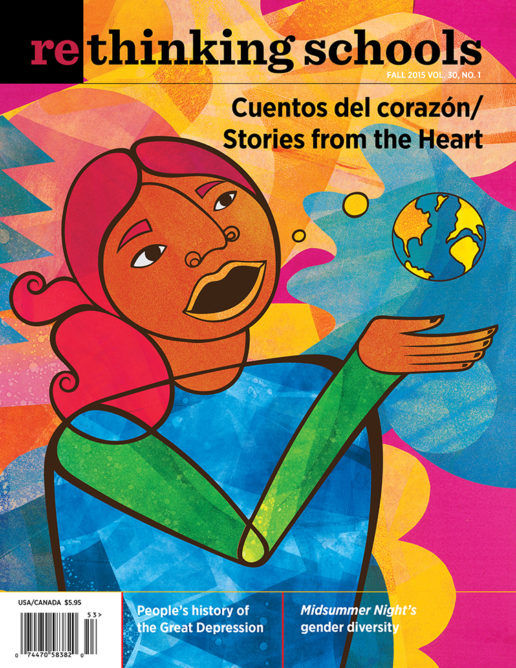Our picks for books and other resources for social justice teachingResources 30.1
Picture Book
This Day in June
By Gayle Pitman
Illustrated by Kristyna Litten
(Magination Press, 2014)
32 pp.

This Day in June is an easy-to-read picture book about a Pride parade. Pride parades are held in cities around the world in June as part of LGBTQ Pride Month. Each page features illustrated examples of what one might see at a Pride parade: “banners swaying, children playing, fancy dresses, flowing tresses, all invited, all excited.” The end pages provide detailed descriptions for a parent or teacher on the significance of the traditions featured throughout the book. There are also guidelines for talking with young children about sexual orientation and gender identity in age-appropriate ways.
Upper Elementary/Middle
Bayou Magic
By Jewell Parker Rhodes
(Little, Brown and Company, 2015)
229 pp.
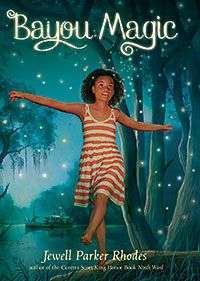
The devastating 2010 Deepwater Horizon spill moved Jewell Parker Rhodes to write this story about Maddy, a young girl on the Louisiana coast. While visiting her grandmother for the summer, Maddy learns about the threat the oil rigs represent to the livelihood and health of the African American community on the bayou. She also learns about the community’s traditions and history, including folktales of the Mami Wata water spirits who accompanied Africans during the Middle Passage. Maddy draws on these traditions to help the community through a crisis. As with all of Rhodes’ historical fiction, Bayou Magic introduces readers to major injustices while providing a picture of how things can change.
Middle/High School
Enchanted Air
By Margarita Engle
(Simon and Schuster, 2015)
208 pp.
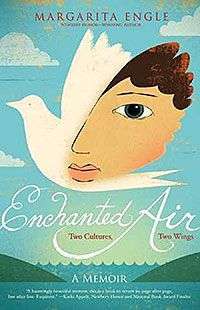
In this memoir in verse, Margarita Engle describes how her life was shaped by enchanted memories of trips to Cuba as a child to visit her mother’s family. Those visits abruptly ended with the U.S. embargo against Cuba after the 1959 revolution. Engle yearned to return, especially to ride the horse that had been promised for her next visit. Adding insult to injury, teachers and students began to taunt her at her school in California, blaming her and “her people” for the state of fear in the United States during the Cuban Missile Crisis. Engle found refuge in books and eventually in writing. She has gone on to become a prolific writer of children’s books, producing stories that challenge many of the stereotypes she confronted growing up. Grades 7 and up.
Eyes Wide Open: Going Behind the Environmental Headlines
By Paul Fleischman
(Candlewick Press, 2014)
203 pp.
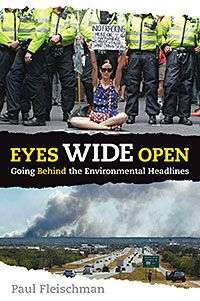
Eyes Wide Open is a delightfully readable primer on the environmental crisis, focusing especially on what keeps people from addressing it, well, with eyes wide open. Here’s what you won’t find in the book, Fleischman promises: “a list of 50 Simple Things You Can Do to Save the Earth.” Instead, Fleischman offers irreverent observations about the rich and powerful, and explains how overlapping mechanisms of obfuscation prevent us from recognizing the enormity of the environmental crisis and what we need to do to address it. Along the way, Eyes Wide Open offers annotated suggestions for further reading and watching. Use Eyes Wide Open with the Rethinking Schools book A People’s Curriculum for the Earth: Teaching Climate Change and the Environmental Crisis.
People’s History
African Americans Against the Bomb: Nuclear Weapons, Colonialism, and the Black Freedom Movement
By Vincent J. Intondi
(Stanford University Press, 2015)
224 pp.
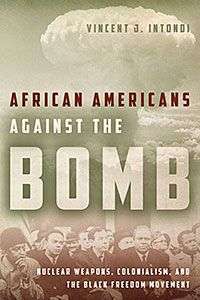
Some of the earliest and strongest protests against nuclear weapons came from activists in the Black freedom movement. Despite Cold War accusations of communism, major African Americans figures—including Bayard Rustin, Langston Hughes, Marian Anderson, and Duke Ellington—voiced opposition to nuclear weapons. W. E. B. Du Bois said, “Big business wants to keep your mind off social reform [and] would rather spend your taxes for atom bombs than for schools.” In 2013, Michelle Alexander, author of The New Jim Crow, urged activists to “get out of our lane” and “connect the dots” among social issues. Intondi’s research makes it clear that, decades ago, Black activists recognized how domestic and foreign policy issues converge.
A Year Without Sundays: Images from the Literacy Campaign in Cuba/Un año sin domingos: La imagen de la alfabetización en Cuba
By Catherine Murphy and Carlos Torres Cairo
(Aurelia Ediciones/The Literacy Project, 2014)
128 pp. with 9 min. DVD
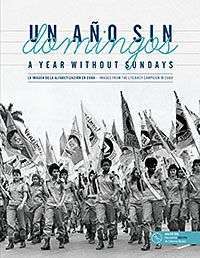
In 1961, Cuba launched a nationwide, highly effective literacy campaign. Young people traveled from the cities to the rural areas, working with farmers during the day and teaching by lamplight at night. The impact of the campaign on the teachers and students is told through the photos and stories in this bilingual book. Not only did the country rapidly reach an unprecedented 96 percent literacy rate, but also the young teachers were profoundly changed. They developed a newfound respect for campesinos, and the traditional roles of women in society changed qualitatively. This is a beautiful and inspirational book.
Websites/Curriculum
Clocking In: Making Work That Works for All of Us
By Race Forward: The Center for Racial Justice Innovation
clockingin.raceforward.org

This is a user-friendly, interactive website that teachers should know about. Click on “restaurant work,” select a character, and follow—for example—Darnell, an African American restaurant worker who confronts choices about workplace discrimination, what to do when he is ill but has no paid sick days, and how to respond to wage theft. In addition to numerous worker stories to explore, the site features interactive graphs that show students how to examine the impact of race and gender on levels and types of employment and rates of poverty. This is a perfect resource for economics, sociology, and government classes.
Justseeds

Many of the artists we feature in Rethinking Schools are part of the Justseeds Artists’ Cooperative. Justseeds describes itself as “a decentralized network of 30 artists committed to making print and design work that reflects a radical social, environmental, and political stance.” And their work is diverse and wonderful. Just as their art helps bring to life the content of Rethinking Schools articles, it can help illustrate the critical, social justice themes in our classrooms. And their posters and graphics can be used as prompts to seed assignments on labor, prisons, environment, education, gender and sexuality, social movements, and more. Explore their website and support this vital and imaginative project.
The Quarry: A Social Justice Poetry Database
splitthisrock.org/poetry-database
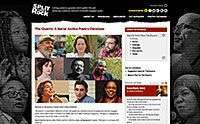
You have your copy of the newest Rethinking Schools book, Rhythm and Resistance: Teaching Poetry for Social Justice. And now you’re looking for more sources for social justice poetry. The Quarry is a fabulous resource—a searchable website featuring more than 300 poems by “contemporary socially engaged poets.” The website announces its aims: “Poems in The Quarry help us name injustices and grieve losses both personal and communal. They speak our rage and our resistance. And they imagine another world, one built on justice and with the power of love. We are so grateful to the brave, visionary poets for their words.” Some of the poems are YouTube performances, others are written text. It’s easy to lose yourself exploring this website—lose yourself and find your next lesson.

